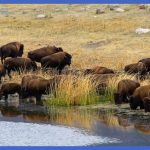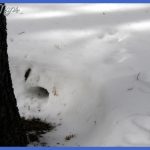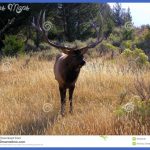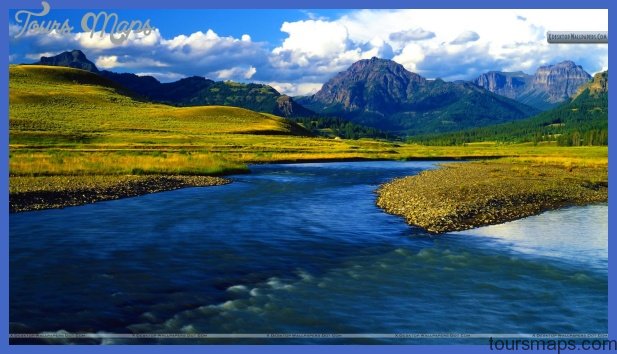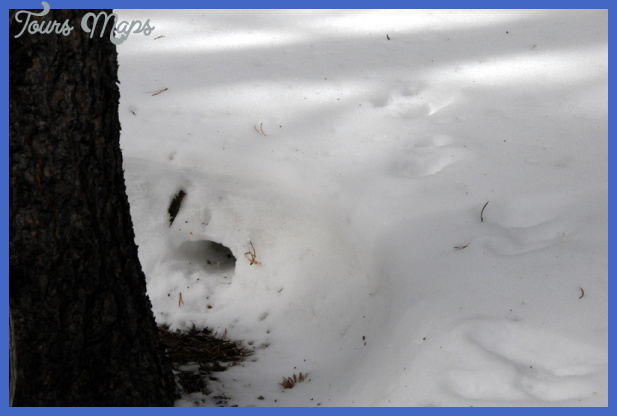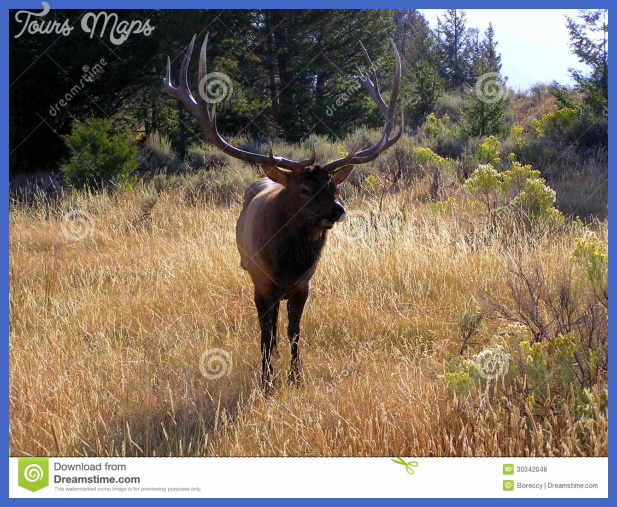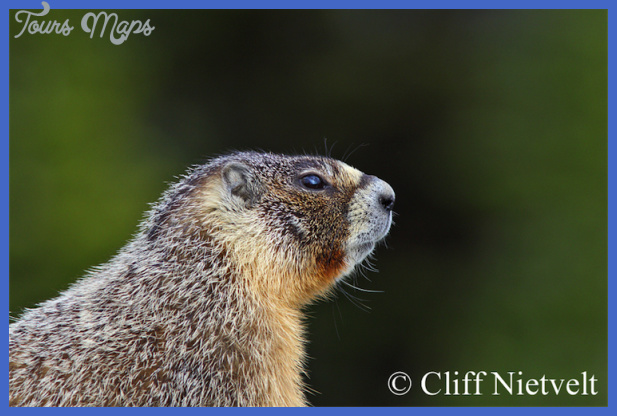Ruminants are cud-chewing, hoofed mammals with an even number of toes, and four species are common in the central plateaus: mule deer, elk, moose, and bison. Male elk, deer, and moose have antlers and shed them every year, while male and female bison have horns. Mule deer (Odocoileus he-mionus) are much smaller than elk and named for the size and shape of their ears; they are also called blacktail deer. Although their cousin, the white-tailed deer (Odocoileus virginianus), is the most numerous big game species in the United States, there are very few whitetails inside the park. Some live just north of Gardiner in Paradise Valley. Rocky Mountain elk (Cervus elaphus nelsoni), dark brown with a light rump and tail, are of the same species as the red deer of Europe. A bull elk may be 5 feet (1.5 m) tall at the shoulder and more than 9 feet (2.7 m) long, weigh half a ton (450 kg), and carry a majestic rack of antlers several feet high. You can’t tell a bull’s age exactly by the number of points on his antlers, but if he has six (or even seven) points, he’s a dominant male. As many as 25,000 elk have summered in the park, but the herds have been shrinking considerably in the 21st century.
Many elk migrate north and south to find winter forage. Chances of seeing elk are particularly good all along the Madison, Gibbon, and Firehole rivers between Norris Junction and Old Faithful Village. Mammoth Hot Springs has its own year-round resident herd. The largest member of the deer family, moose (Alces alces shirasi) are relatively rare in Yellowstone probably a few hundred. They’re shy of people, so seeing one is an exciting experience. Watch for an ungainly, large, dark brown animal if it’s a mature bull, it will have distinctive palmate antlers; that is, shaped like the palm and fingers of a hand. Both bulls and cows have a dewlap, a piece of hanging skin, under the throat. They eat willows and other plants that grow Moose in shallow water all summer, but when snow is deep, they move high up to browse on fir trees. The buffalo, more properly called the bison (Bison bison), symbolizes the wide open spaces of the American west. Ironically, the bison is also probably the most grievous case of man’s wanton destruction of a natural resource in America’s history. Not only did hunters nearly eradicate the bison during the last decades of the 19 th century, but it was ocial government policy to exterminate them in order to suppress the Native American people who depended upon them.
Yellowstone’s herd is sometimes called the only surviving wild population of bison. Though not fenced in, they are not exactly the same wild bison as when the park was new. The few bison left by 1900 were crossbred here with semi-domesticated animals from Texas and northern Montana in an early successful effort to undo damage to the environment. The restoration of the bison proved so successful, in fact, that by 1940 the park was giving them away to zoos. The calm-looking bison can be every bit as cantankerous as a farmer’s bull and can sprint faster than any Olympic runner. The Park Service warns you amply about the danger of approaching bison, because many people have been injured. Bison herds graze along the Madison and Firehole rivers and in the Hayden and Lamar valleys.
Yellowstone Larger mammals Photo Gallery
Maybe You Like Them Too
- The Best Cities To Visit in The World
- World’s 10 Best Places To Visit
- Coolest Countries in the World to Visit
- Travel to Santorini, Greece
- Map of Barbados – Holiday in Barbados


